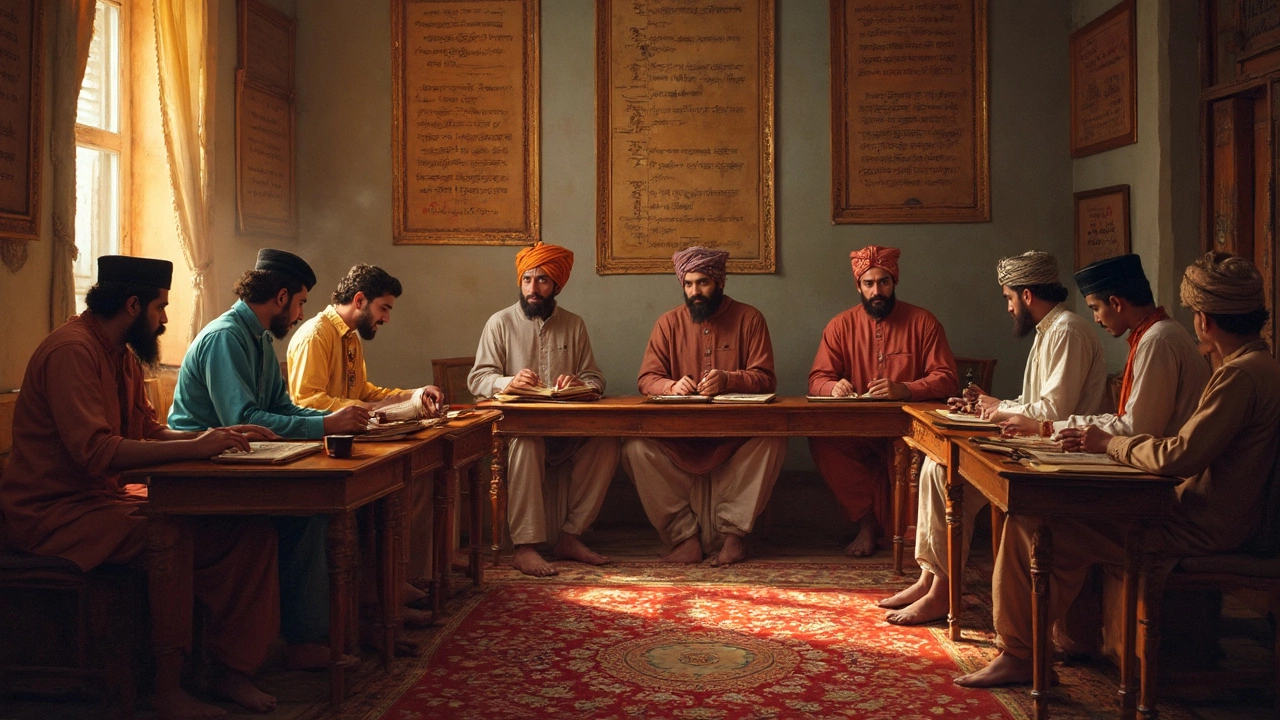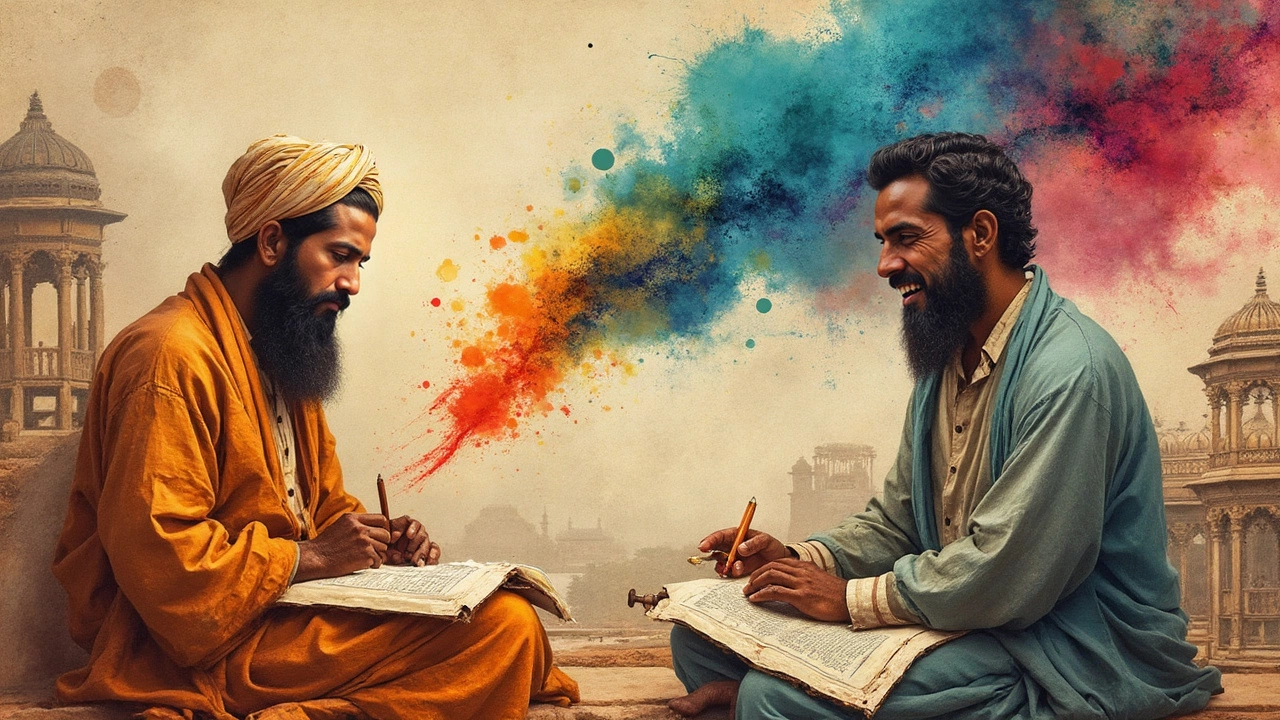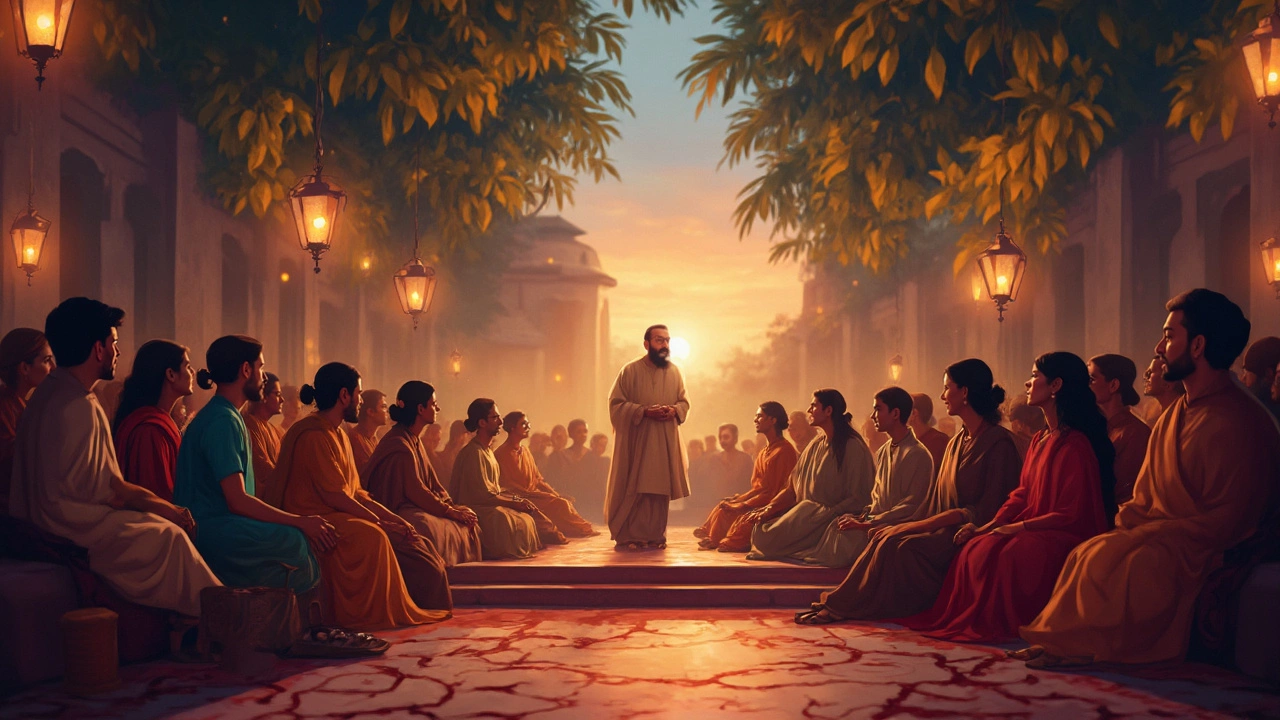Nazm vs Ghazal: Key Differences Explained for Poetry Lovers
 Jun, 30 2025
Jun, 30 2025
Picture two friends heatedly debating at a Delhi chai stall—one insists nazm is the truest form of self-expression, the other swears by the haunting charm of ghazals. Both forms light up the world of Urdu poetry, but unless you know their essence, it’s easy to just nod along pretending you can tell one from the other. Not a chance. These poetic siblings share roots, language, and audience, but their souls couldn’t be more different. Dive too fast, and it’s like mixing up cricket and football—some words are the same, the gameplay is wildly different. So, what’s really going on under the hood of these classic South Asian art forms—and why does it matter so much to people, whether they’re nostalgia-ridden aunties or Gen Z binge-listening to classic Jagjit Singh tracks?
How Structure Sets Nazm and Ghazal Poles Apart
Nazm and ghazal offer two radically different worlds once you peek past the Urdu script. Step into a mushaira (Urdu poetry event), and you’ll sense it. Ghazal works like a set of pearls—each couplet is striking on its own, yet strung together with a thread of mood. Every sher (couplet) stands independently. You can quote, sing, or worship a single couplet from a ghazal, and it won't feel out of place. Think of Mirza Ghalib’s famous line, "Hazaron khwahishen aisi..."—nobody asks for the next lines, that’s the magic of the ghazal’s format. The structure isn’t just for show; it lets the poet pack universal truths, heartbreaks, or philosophy into just two lines.
Nazm, on the other hand, is like a streaming web show where every episode must be watched in sequence. The theme, story, and progression demand continuity; cutting out a single verse from a nazm is just like pausing Paatal Lok mid-scene. You lose the impact, the punch—the entire unity is disturbed. Unlike the self-contained couplets of ghazals, nazms flow from start to end on a single emotional or conceptual thread. The poet isn’t interested in how clever each couplet sounds in isolation; the intent is to build and build until the reader or listener is swept away. It could be about war, love, change, or daily life, but the destination is always clear, one single narrative. Famous nazms like Sahir Ludhianvi’s "Taj Mahal" or Faiz Ahmed Faiz’s "Bol" are top examples—you just can’t break them into pieces.
Let’s get technical for a sec—ghazals must follow a meter, a defined rhyme pattern (radif and qafia), and every couplet should end with the same word or phrase (the radif). Nazms are freewheeling; while some maintain meter, contemporary ones often break all the rules. This is why newer poets experiment with topics like modern relationships or the monotony of daily office life, and nazm accommodates their language without restriction. The famous line from Majrooh Sultanpuri’s nazm "Main akela hi chala tha janib-e-manzil magar..." has a rhythm, but you’ll find others that are almost prose.
Here’s a simple table comparing the two structures, so you never mix them up at your next poetry night—or WhatsApp group debate:
| Element | Nazm | Ghazal |
|---|---|---|
| Structure | Continuous theme, like a story or essay | Series of independent couplets (shers) |
| Rhyme Scheme | Flexible, often free verse | Strict, with radif and qafia |
| Thematic Unity | One subject/theme throughout | Each couplet can be a different theme/topic |
| Room for Experimentation | High—can use various forms & topics | Limited by tradition & form |
| Example | Sahir’s "Taj Mahal" | Ghalib’s "Hazaron khwahishen aisi" |
If you enjoy watching how poets break the mold, nazm will feel like a playground. But if you crave timeless tradition and intricate wordplay, ghazal will always win your heart.

Emotions, Themes, and How Each Form Captures Life
It’s tempting to say nazms are modern and ghazals are old-school, but scratch beneath the surface and you’ll find nazms have tackled everything from heartbreak to revolution since their earliest days. The real twist is in the delivery. Ghazals are obsessed with longing—unrequited love, distance, mystical yearning, or existential angst. Every couplet is a mini-world full of pain and hope packed into a just a couple of lines. Want proof? Listen to Mehdi Hassan singing "Ranjish hi sahi"—even 40 years later, people swear they can taste the heartbreak.
Nazms, meanwhile, are chameleons. Sure, some are about love, but others pull you into stories about migration, political revolution, feminism, and everything in between. This diversity is one reason younger poets and performers adore nazms—they can talk about climate change one moment and their first heartbreak the next, all in the same flow. The legendary poet Faiz Ahmed Faiz wrote his nazms from behind bars; he turned personal pain into rallying cries that have echoed through protests for decades. Look up his "Bol, ke lab azaad hain tere"—the verses have been banners for social movements everywhere from Lucknow to London.
Both forms feed off powerful imagery, but ghazals depend on symbols that repeat across centuries—beloved, wine, night, longing. Nazms absorb influences from everything: street life, new technology, cricket madness, Bollywood, and of course, Delhi’s infamous winter smog. This means you’re just as likely to hear a nazm at a political rally as you are at a romance-filled poetry night. There’s no fixed list of metaphors or themes—anything goes if it helps tell the story.
Why does this all matter? Because as the world shrinks, and desi poetry hits the global stage, each form reminds us what’s unique about South Asian literature: deep emotional range, endless cultural references, and the power to bring strangers together just for a few minutes of shared feeling. Want to impress a poetry geek? Mention how the Partition inspired heaps of nazms but only gently drifted into ghazals. If you’re at a get-together and want to stir emotions, recite Gulzar’s nazm “Raavi Paar” and watch grown adults blink away tears.

Why the Difference Still Matters in 2025 (And Tips for Navigating Mushairas)
Delhi, June 2025: open mics and mushairas are making a wild comeback, and the lines at Kunzum Café or inside romantic college fests prove Urdu poetry is more alive than ever. But if you’re new to these two forms, you could end up cheering at the wrong place or quoting a ghazal couplet mid-nazm, and that’s a quick way to spot the newbies. Old-timers will laugh (maybe kindly), but wouldn’t you rather blend in with the pros?
You don’t need fancy textbooks to sharpen your ear. Start with playlists—ghazals of Jagjit Singh or Begum Akhtar if you want tradition, or try spoken-word nazms by Hussain Haidry or Varun Grover for relatable, modern stuff. At any mushaira, notice how ghazal reciters pause after every couplet, inviting applause. If distracted, you might miss a killer line. Whereas nazm performers grab the mic and never let go—the applause comes only at the end, like theatre.
A practical tip: if the verses you’re listening to sound like pearls strung together, with equal weight on every couplet, you’re in ghazal territory. If there’s a story or argument building, it’s nazm. Here’s something people rarely realize: technically, a few famous "ghazals" (especially in Bollywood) are actually nazms because they don’t follow the strict couplet rules. Next time you hear a popular ‘ghazal’ with a chorus, check the structure! Half the time, what we call ghazal today is poetic license—and nobody’s telling the original poets.
Here’s a quick cheat code for your next literary adventure:
- Want to sound knowledgeable at a party? Drop the term “sher” for ghazal couplets and “band” for nazm verses.
- If someone says, “wah wah!” after every two lines, it’s probably a ghazal.
- Pay attention to the way poets use rhymes—nazms often ditch them, while ghazals are obsessed with their radif and qafia ending patterns.
- Feel like dabbling yourself? Start by writing nazms—they have fewer rules, and you can pour your own stories into them. Once you're comfortable, try the rigor of a proper ghazal—bonus points if you can sneak your name into the maqta (the last sher where poets traditionally plug their name).
- If you want to know what’s hot now, look at fusion events or Instagram reels—young artists are mixing nazm and ghazal traditions with rap, English, and even sign language. The forms keep growing but their heart remains rooted in Urdu.
And as Urdu poetry sneaks into movies, podcasts, college fests, and even YouTube shorts, knowing this difference gives you a secret pass. Whether you crave the precision and heartbreak of a ghazal or the narrative ride of a nazm, that inside knowledge suddenly makes every poem richer. The next time that friend at the chai stall quizzes you, you might just be the one dropping facts, changing minds, and winning the argument—with your head held high and maybe even a little ‘wah wah’ from the crowd.